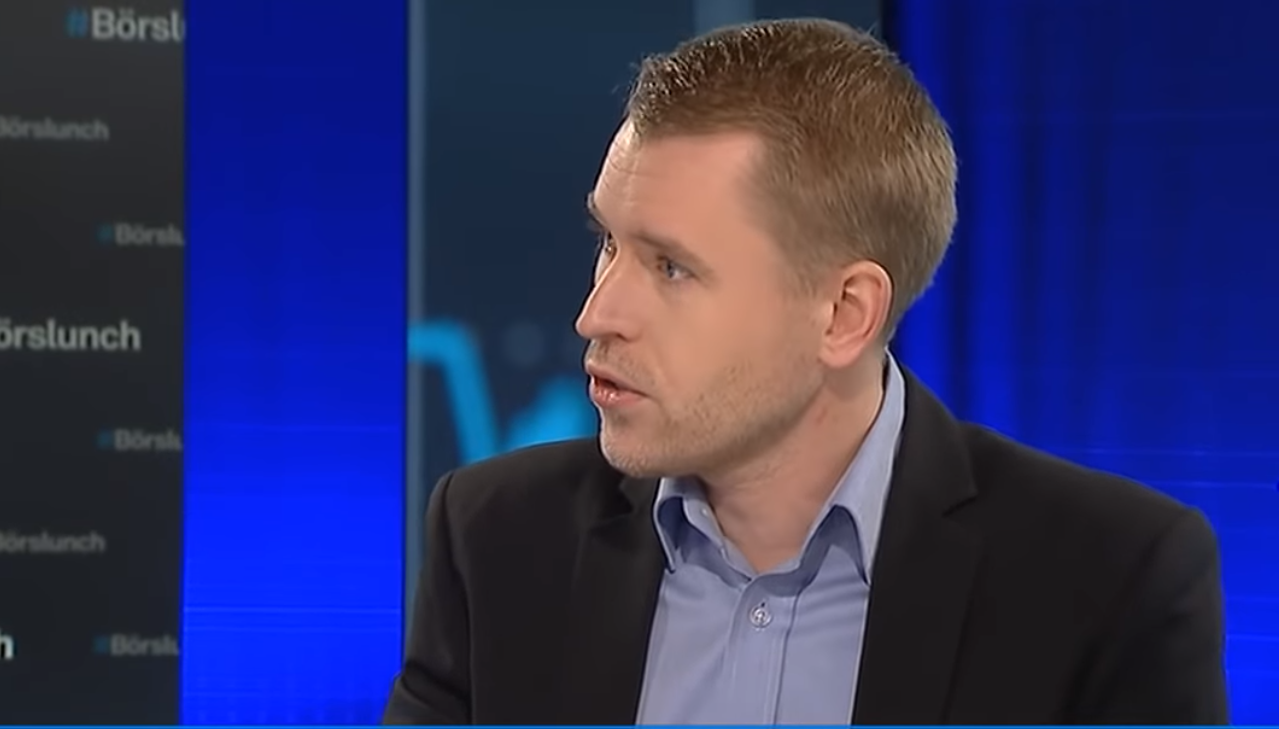Analys från DailyFX
WTI Crude Oil Price Forecast: 3-Month Lows As U.S. Supply Glut Renews Sub-$40 Fears
To receive Tyler’s analysis directly via email, please SIGN UP HERE
Talking Points:
- Crude Oil Technical Strategy: Favoring Downside $44.62/bbl
- Intermarket Analysis Shows US Dollar Within A Whisper Of A Breakout
- Sentimental Trading System Weekly Long Exposure Increased ~244%
Access Our Free Q3 Oil Outlook As Oil’s Best Quarter Looks For Confirmation
The price of WTI Crude Oil (CFD: USOil) traded at its lowest levels in three months this week as the Crude rally looks less sustainable than the equity rally that recently saw the SPX500 reach lifetime highs this month. A few weeks ago, we shared a new data point that helped forecast the price decline that has developed:
Recent reports show the short-term floating storage is sitting (pun intended) at its highest level since 2009 per the IEA July Oil Market Report. Bloomberg recently noted that ~9 million barrels of crude were stored off the coast of the North Sea in the UK, which was a significant jump of ~7 million barrels in May.
For what it’s worth, as I was flying into Houston Airport on July 22, I was amazed at the Oil Tanker’s sitting offshore. While I do not fly into Houston regularly, it does add to the report’s credibility, as it seemed a tanker could not turn around without running into other tankers in the Gulf of Mexico.
Track short-term Crude Oil price levels and patterns with the GSI indicator!
For this reason, we have encouraged you to keep an eye on increasing supply in H2 2016, and whether or not supply will be met with sufficient demand. As we head into the close of July, Crude Oil price is down ~20% from the June peak, and seasonal supply per the EIA report is at its highest in at least two decades.
That being said, we appear to be seeing a new wave of supply coming onto the market, and if demand cannot keep up (which the storage on Oil tankers argues it cannot), we could move lower. To explain how much lower, let’s move on to the charts.
Crude Oil Price Chart Shows Little Support Strong Downward Momentum Is Building
Few things are going right for Crude Oil Bulls when looking at the price chart. We’re seeing buyers fail to come in and support the price that nearly doubled from ~$26/bbl in February to ~$51/bbl in June. We’ve recently seen a breakdown through the 38.2% Fibonacci retracement level of the February-June range at $41.85/bbl, and a further breakdown is favored when looking at Ichimoku Cloud.
Ichimoku Cloud is a trend following indicator that allows you to see the “big-picture trend” on the chart. If price (shown via candles), and the momentum line (bright green on my chart) are below the cloud, we are in a bearish environment. Buying against the momentum and trend is not advised because a downtrend tends to gather steam much like a snowball rolling down a mountain.
For now, we can use the bottom of the cloud, which aligns with the 100-DMA at $44.63/bbl as clear resistance. Until price breaks above this level on a closing basis, higher prices should be viewed as more favorable levels to enter a short position as opposed to “buying low.”
Significant support aligns at the 61.8% Fibonacci Retracement zone of the February-June zone, which is also the late-March low ~$35.81/bbl. While fighting a trend is not encouraged, that is a level to see if buyers begin to show up due to bargain prices.
A failure for this level to hold will put the pit back in the stomach of Oil producers, as they will likely wonder if we are yet to see the low of this Millennium to date.
Bottom Line:
The pullback we have seen is not surprising, but unfortunately, the evidence is building that we could see downside acceleration. Furthermore, now that we have broken below the 100-DMA, a stronger break toward the next key support of 50% of the February-June range at $38.835/bbl could be underway.
For now, be on the watch for further US Dollar strength that would continue to pressure the price of Oil down through the 38.2%-61.8% retracement zone of the February-June rally.
Contrarian System Warns of Further Downside As of 7/28/16
In addition to the technical focus around multiple support-zones, we should keep an eye on retail sentiment. Further downside is currently aligned with our Speculative Sentiment Index or SSI for now.
As of mid-day Thursday, The ratio of long to short positions in the USOil stands at 2.98, as 75% of traders are long. Long positions are 21.8% higher than yesterday and 244.2% above levels seen last week. Short positions are 1.5% lower than yesterday and 17.6% above levels seen last week. Open interest is 15.0% higher than yesterday and 58.6% above its monthly average.
We use our SSI as a contrarian indicator to price action, and the fact that the majority of traders are long gives a signal that the USOil may continue lower. The trading crowd has grown further net-long from yesterday and last week. The combination of current sentiment and recent changes gives a further bearish trading bias.
Key Levels Over the Next 48-hrs of Trading As of Monday, July 14, 2016
T.Y.
Think Oil has more room to run? Trade Oil With Low Margin Requirements (non-US Residents only)
Analys från DailyFX
EURUSD Weekly Technical Analysis: New Month, More Weakness
What’s inside:
- EURUSD broke the ‘neckline’ of a bearish ‘head-and-shoulders’ pattern, April trend-line
- Resistance in vicinity of 11825/80 likely to keep a lid on further strength
- Targeting the low to mid-11600s with more selling
Confidence is essential to successful trading, see this new guide – ’Building Confidence in Trading’.
Coming into last week we pointed out the likelihood of finally seeing a resolution of the range EURUSD had been stuck in for the past few weeks, and one of the outcomes we made note of as a possibility was for the triggering of a ’head-and-shoulders’ pattern. Indeed, we saw a break of the ’neckline’ along with a drop below the April trend-line. This led to decent selling before a minor bounce took shape during the latter part of last week.
Looking ahead to next week the euro is set up for further losses as the path of least resistance has turned lower. Looking to a capper on any further strength there is resistance in the 11825-11880 area (old support becomes new resistance). As long as the euro stays below this area a downward bias will remain firmly intact.
Looking lower towards support eyes will be on the August low at 11662 and the 2016 high of 11616, of which the latter just happens to align almost precisely with the measured move target of the ‘head-and-shoulders’ pattern (determined by subtracting the height of the pattern from the neckline).
Bottom line: Shorts look set to have the upperhand as a fresh month gets underway as long as the euro remains capped by resistance. On weakness, we’ll be watching how the euro responds to a drop into support levels.
For a longer-term outlook on EURUSD, check out the just released Q4 Forecast.
EURUSD: Daily
—Written by Paul Robinson, Market Analyst
You can receive Paul’s analysis directly via email bysigning up here.
You can follow Paul on Twitter at@PaulRobinonFX.
Analys från DailyFX
Euro Bias Mixed Heading into October, Q4’17

Why and how do we use IG Client Sentiment in trading? See our guide and real-time data.
EURUSD: Retail trader data shows 37.3% of traders are net-long with the ratio of traders short to long at 1.68 to 1. In fact, traders have remained net-short since Apr 18 when EURUSD traded near 1.07831; price has moved 9.6% higher since then. The number of traders net-long is 15.4% lower than yesterday and 16.4% higher from last week, while the number of traders net-short is 0.4% higher than yesterday and 10.5% lower from last week.
We typically take a contrarian view to crowd sentiment, and the fact traders are net-short suggests EURUSD prices may continue to rise. Positioning is more net-short than yesterday but less net-short from last week. The combination of current sentiment and recent changes gives us a further mixed EURUSD trading bias.
— Written by Christopher Vecchio, CFA, Senior Currency Strategist
To contact Christopher Vecchio, e-mail cvecchio@dailyfx.com
Follow him on Twitter at @CVecchioFX
To be added to Christopher’s e-mail distribution list, please fill out this form
Analys från DailyFX
British Pound Reversal Potential Persists Heading into New Quarter

Why and how do we use IG Client Sentiment in trading? See our guide and real-time data.
GBPUSD: Retail trader data shows 38.2% of traders are net-long with the ratio of traders short to long at 1.62 to 1. In fact, traders have remained net-short since Sep 05 when GBPUSD traded near 1.29615; price has moved 3.4% higher since then. The number of traders net-long is 0.1% higher than yesterday and 13.4% higher from last week, while the number of traders net-short is 10.6% lower than yesterday and 18.3% lower from last week.
We typically take a contrarian view to crowd sentiment, and the fact traders are net-short suggests GBPUSD prices may continue to rise. Yet traders are less net-short than yesterday and compared with last week. Recent changes in sentiment warn that the current GBPUSD price trend may soon reverse lower despite the fact traders remain net-short.
— Written by Christopher Vecchio, CFA, Senior Currency Strategist
To contact Christopher Vecchio, e-mail cvecchio@dailyfx.com
Follow him on Twitter at @CVecchioFX
To be added to Christopher’s e-mail distribution list, please fill out this form
-
Analys från DailyFX10 år ago
EUR/USD Flirts with Monthly Close Under 30 Year Trendline
-

 Marknadsnyheter2 år ago
Marknadsnyheter2 år agoUpptäck de bästa verktygen för att analysera Bitcoin!
-
Marknadsnyheter5 år ago
BrainCool AB (publ): erhåller bidrag (grant) om 0,9 MSEK från Vinnova för bolagets projekt inom behandling av covid-19 patienter med hög feber
-
Analys från DailyFX12 år ago
Japanese Yen Breakout or Fakeout? ZAR/JPY May Provide the Answer
-

 Marknadsnyheter2 år ago
Marknadsnyheter2 år agoDärför föredrar svenska spelare att spela via mobiltelefonen
-
Analys från DailyFX12 år ago
Price & Time: Key Levels to Watch in the Aftermath of NFP
-
Analys från DailyFX8 år ago
Gold Prices Falter at Resistance: Is the Bullish Run Finished?
-

 Nyheter7 år ago
Nyheter7 år agoTeknisk analys med Martin Hallström och Nils Brobacke













